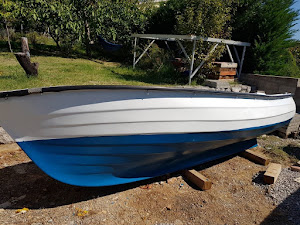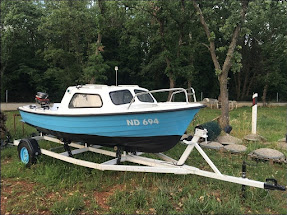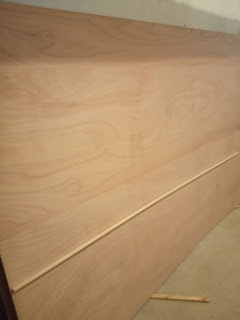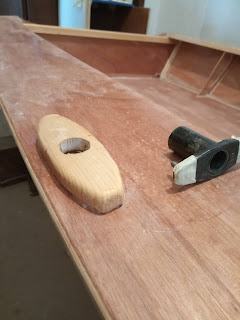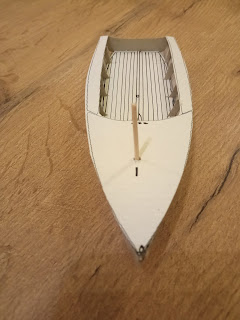I want to write about a factory that allowed the spread of small plastic boats for the average working class on Yugoslavia seaside. At the time, the ports were full of traditional wooden boats (which I really like). Plastic materials were just developing and a new thing, but thanks to its lower price and less demanding maintenance they spread, and this boats are all over the seaside, from Slovenia to Montenegro and especially Croatia. The story begins in the year 1968, two years after the closing of the Raša mine, in the vicinity of Labin in Istria. The firm "A. Mamić" from Rijeka begins the production of plastic boats in the direction building of the mine. The first 30 employees were mostly former miners. It was planned to employ other 150 until the end of the year. In the year 1969 the firm Vulkan takes over "A. Mamić", and then a foreign investment happened. Her Kaletsch from Germany, a gynecologyst per vocation, invests in the factory, and promotes the export of the new boats to Germany. Circustances change rapidly, and in the year 1970 from Vulkan the factory becomes the independent company "Kvarnerplastika". Maksim Lesjak, an educated economist from the "Prvomajska" tools factory becomes the director for the following years. The production grows and the new boats become very popular. The production conditions in the mine direction building were poor, and the moving to a new place was needed. After few years the production moves to the new production site in the industrial zone of Dubrova. After several years the factory faces various problems, common to the local industry in that period. High loan rates, obsolete technology, excessive number of workers, lack of qualified specialists, crisys on the Yugoslav market...all that brings to financial losses. After a change in the leadership, which brings Roman Černjul on the leading position, the factory changes the name to "Adria" in 1987. They try to solve the problems by changing the production range. Bigger yachts and sailboats are developed. A collaboration with the company SAS from Zadar is arranged. The SAS company's core business was yacht charter. This might have worked, but at the beginning of the nineties a war involved the region. This killed the local market and banished the tourists. After few years, the company ended its activity.
However, its inheritance is important for the region, since many people met the joy of the sea through the factory boats and the ports are still full of them. The production equipment was bought by other firms and entrepreneurs, so some of the models are still sold with small modifications and new names. Somebody can say the models are obsolete, but I find them timeless. They represent a more modest, natural and down-to-earth (or better, down-to-water) approach to the sea in comparison to the modern-days race to power and luxury show-off trends.
Some of the most famous models:
Kvarnerka (3.30 m): a lightweight boat, easy to move on water and on shore. Often used as a dinghy for bigger boats, or for fishing close to shore. Powered by oars or by a small outboard.
Učka (4.1 m): a standard small boat, with storage under the bow, a central bench, side and stern benches. Practical for fishing, decent capacity for 2-4 people, outboard powered.
Vega (4.4 m): similar to Učka, but bigger and havier. Used for fishing, outboard powered. Some added a small cuddy cabin.
-Istranka (4.9 m): the first with the factory-made cabin, allowed sleeping and storage of equipment for more then one day. Some are built with a raised shelter for the cockpit and with remote steering. Many people used it for cruising the coast during summertime.
PG550 ( 5.5 m): a bigger speedboat. There were a cabin and an open variant. It needed an outboard from 40 to 100 hp. It was sometimes used by the police or port authority
Dalmatinka (5.9 m): a classic displacement hull that allowed fishing and cruising for several days and sometimes for a family. Under the bow there could sleep 3 persons. Under the entrance a cabinet for storage was often installed. The kockpit was often protected by a raised shelter. It allowed a centrally located inboard engine. Often a Torpedo (a factory from Rijeka, then Yugoslavia) was used. Alternatielly an outboard could easily be mounted on the stern.
Primorka (6.3 m): similar to the Dalmatinka, but longer, larger, taller and heavier. It allowed extended cruises along the Adriatic coast. Powered with an inboard engine, located under the cabin entrance.
Adria 800 (8 m), Adria 1000/1002 (10 m): later displacement models, intended for family cruising, but also charter business. The bigger dimensions allowed a higher comfort, with standing room. The 1002 model was intended for 2 inboard engines.
There were also other, less famous models, like the Sirius 660, different speedboats, and some sailboats.
Sources:
https://labinska-republika.blogspot.com/2012/03/tko-se-jos-sjeca-tvornica-camaca.html
http://forum.ribolovnamoru.com/viewtopic.php?f=8&t=11176



